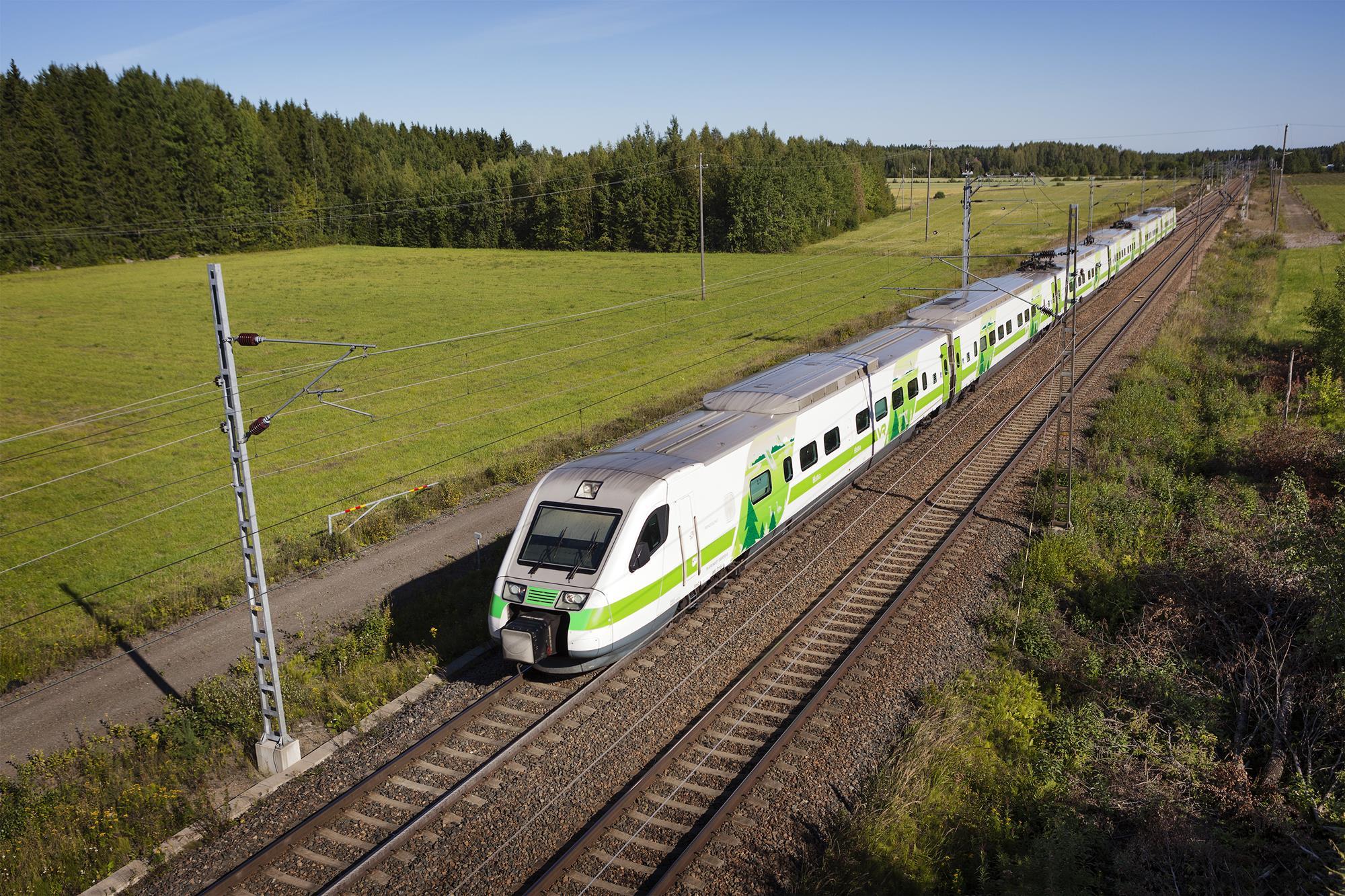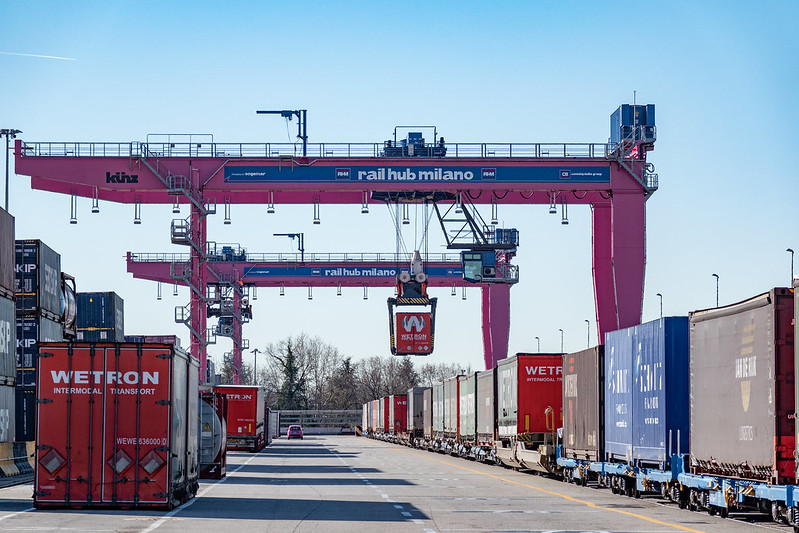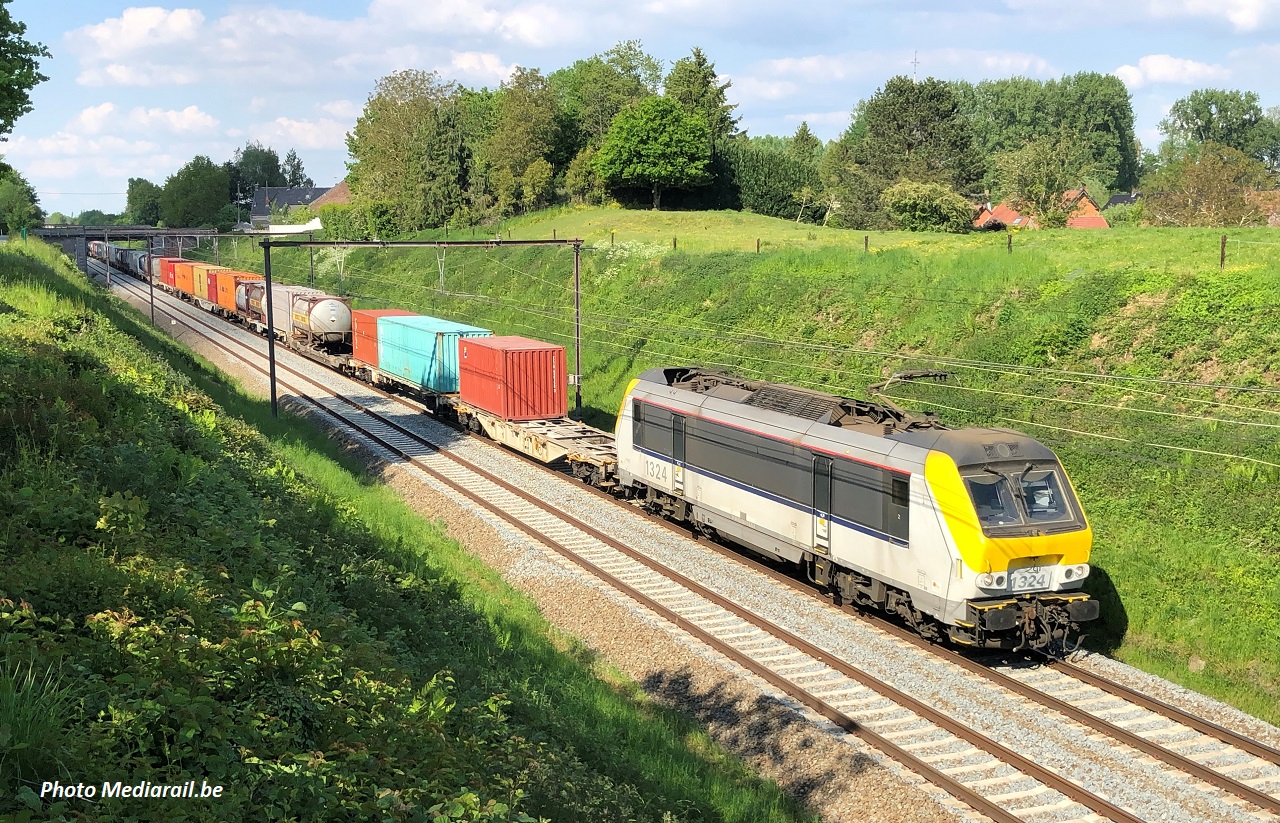02/12/2022 – By Frédéric de Kemmeter – Railway signalling and freelance copywriter – Suscribe my blog
(Version en français)
🟧 Back to homepage 🟧 See our brief news 🟧 UK 🟧 China 🟧 Japan 🟧 USA 🟧 the rest of the world
Austria – Baltic States – Czech Republic – Finland – France – Germany – Italy – Netherlands – Norway – Poland – Portugal – Republic of Ireland
– Slovakia – Spain – Sweden – Switzerland – Ukraine
Doubling the modal share of rail by 2030 does not only mean tackling road traffic. The technology for transporting semi-trailers is now relatively mature, but shippers must also be convinced. Rail transport must therefore be suitable for the industrialists, who are the ones primarily concerned.
This is something you hear everywhere, in every speech: we have to put the trucks on the trains, the motorways are saturated. This is true. But what is even more true is that this has existed since 1958 in France with the so-called « Kangaroo » loading technique, at a time when motorways and large industrial parks did not exist.

Things have evolved considerably since then and today we have intermodal transport, known in France as « autoroute ferroviaire »(rail motorway). It is important at this stage to make a clear distinction between the road model (trucks, semi-trailers and swap bodies) and the maritime model, which is only about containers.
First, understand the loading technical…
At first glance, the volume of all these « boxes » appears to be identical. But in reality it is the handling of these boxes that differs:


- The container is the hallmark of the maritime world, a globalised sector that is the basis of globalisation. The 15 million containers in circulation worldwide are characterised by their robustness and their ISO ratings are official standards established since the 1960s. They are handled from the top using a spreader, which is a standardised, world-wide, hooking bearing;
- Swap bodies are a land-based invention of the railways, and their dimensions were based directly on the railway wagon gauge, a few centimetres larger than containers. They never go on ships. As these boxes are made of a frame covered with a light tarpaulin, they must be handled from the chassis, i.e. from below. The same applies to semi-trailers, which are only ever swap bodies that retain their axles. Handling is done via 4 clamps, not a spreader as for containers. Semi-trailers can be, however, easely transferred in ferries, thank to their axles, which makes it a trimodal unit road/rail/sea.
This costly accumulation of separate equipment eventually led to design a complex spreader + clamps combination, which can be used either on a gantry crane or on a reachstacker.
ISO containers have not changed dimensions since their invention, as expensive container carriers are built on the basis of these dimensions. Without going into detail, however, there are containers that have increased in height and some even in length, without compromising the width.
On the other hand, semi-trailers transhipped by clamps had to have reinforcements in the chassis and four duly codified anchoring points. This constraint generated – according to the sources – an additional cost of 15 to 20% of the normal price of a road trailer, which is a bad argument in favour of modal shift…
To each his own…
From a political, legal and technical point of view, a harmful distinction was maintained until the 1990s between containers and trucks and swap bodies. This resulted in the creation of duplicate traffic and terminal arrangements in each country:
- France : Novatrans (semi-trailers) – CNC (containers) ;
- Belgium : TRW (semi-trailers) – Inter Ferry (ITF – containers) ;
- Germany : Kombiverkehr (semi-trailers) – Transfracht (TFG – containers) ;
- Italy : CEMAT (semi-trailers) – ITN (containers) ;
- ….
Container transport was the direct responsibility of the railway incumbent, while truck/swap body transport was the responsibility of truckers and shippers, with the obligation to use the rail monopoly. In some cases, separate terminals were built in some cities with very modest use of both, which led to significant underuse.
The liberalisation of the 1990s and 2000s considerably opened up the prospects of massification and profitability by removing the rigid legal rules, and the container became part of what is known as intermodal transport, regardless of ownership or technique. Giants like the Swiss HUPAC or the German Kombiverkehr now have single terminals and accept all types of units, containers and semi-trailers.
For the small independents – and others – who cannot place their trailers in a terminal, the problem was to accept the full truck on a wagon. Various technical constraints have led to a variety of creative techniques:



- In the 1970s, an ultra-flat wagon with small wheels was created in the German-Alpine area. However, this invention never made it to the Atlantic countries, for contradictory reasons depending on who you ask! This system allows the entire truck (semi-trailer and tractor) to be loaded, as well as the driver, who does not remain in his truck but takes his place in a passenger car coupled to the train. This rail motorway, called « ROLA » in German, runs without much profitability through Switzerland and the Tirol.
- In the 1990s and 2000s, the SNCF strongly supported an Alsatian industrialist who proposed – and still proposes – his concept known as « Modalohr », a term that can no longer be used today following a legal dispute. It is therefore « rail motorway (AF) » that we should be talking about in France, as the SNCF has created a subsidiary dedicated to its operation, Viia. The AF crossing the Alps and created in 2003 between Aiton (FR) and Orbassano (IT) is the only one that still offers the transport of tractors, but decouples it from the semi-trailer. Since then, other AFs have been created from Calais and Bettembourg (LU) toward Perpignan;
- The frantic search for ‘unloading without a crane’ has led to the highly technological CargoBeamer concept in Germany. It consists of a tray that moves on two crutches inserted in the ground, as the tray is translated on a wagon with lowered edges. Aware of the high degree of sophistication, CargoBeamer has made its platform suitable for conventional vertical reachstacker transhipment, thus serving terminals not equipped with the technological crutches.
French-style AF and CargoBeamer are now competing fiercely on the North Europe-Mediterranean flows, as their respective terminals are incompatible. AF uses wagons with a 45° swivelling tray (middle photo) while CargBeamer uses a very sophisticated transverse unloading (bottom photo).
The dimensions of the trailers are gradually increasing, with a maximum of 13.60m long and 2.70m high (4m in total with wheels), for a load of 33 ISO pallets (or 90m³).
On a technical level, the use of a mobil tray – which the Italian-German company TXL has patented – now makes it possible to free oneself from the constraints of the reinforced trailer, which was mentioned above. Everyone can now access the intermodal train. No more excuses to avoid the train?
So why are there so many trucks on our roads?
As always, it is the realities on all days that burn away all the theories, no matter how fine they may be. In contrast to ROLA, experience shows that the Lohr and CargoBeamer systems only accommodate semi-trailers, without tractors or drivers.
Let us be clear and honest: unless there are strong constraints, the large transport companies that make extensive use of Eastern European labour have no interest in rail technology. For them, competitiveness is the only thing that counts. Is this sustainable?
These practices are beginning to backfire on these transporters, who are now facing a shortage of drivers and are sometimes forced to refuse customers. This is not yet filling up the trains, but a movement – a small ripple – is taking shape.
There are five reasons for the continuing abundance of trucks on our roads:
- Firstly, the difference between the operating costs of rail and road, generated by the failure to take into account the external negative effects – which are nonetheless recognised – such as pollution, accidents and the deplorable social conditions of some drivers;
- Then there is the inevitable last mile, which for some shippers sometimes means a 200 km journey to a distant customer. There are not enough terminals where they are needed, and if there were more, it would mean more trains but less load, which the networks do not like (saturation with too short trains);
- The rail service is still characterised by its sole function of rail transport, without taking care of the « before » and « after ». The problem is that trucking companies have to find a correspondent abroad to pick up their trailer at the terminal. Only large carriers can rely on a network of european’s correspondents (sometimes it is the company itself that has its own subsidiaries abroad). Others fear trailer theft and prefer to make the trips with their own drivers…
- The industrial structure of some countries is made up of SMEs that only deliver locally or regionally, and whose volumes are too low for rail use. Of course, some SMEs export, but sometimes with a few pallets per day (a wine producer, for example), which does not even fill a truck, let alone a train;
- Finally, there is the question of logistics flows, which we have discussed at length in these columns. The train journey must correspond to what the manufacturer or shipper requires, even with the first and last kilometres. Logistics is an essential element in the competitiveness of companies. When a Bremen-Stuttgart route is requested, a Hamburg-Mannheim route should not be proposed « because it is more suitable for rail operations…».
Putting lorries on trains is therefore something quite different from talking points for seminars or theories of consultancy firms.
It requires a detailed knowledge of both the rail freight sector and, above all, of logistics flows by industrial sector, because the logistics of yoghurt has nothing to do with furniture, steel plates or chemical tanks. Everything is separate, everything is complex. This is the world today and it is not about to change. So it’s the railways that have to adapt, not the other way around… 🟧


Related topics:
 The European rail network? A real patchwork of technologies…
The European rail network? A real patchwork of technologies…
02/11/2022 – If you think that railways are just about politics and finance, then you’re in for a real treat. Because railway infrastructure is above all national technology, which is an obstacle to standardisation and the European dream of trains without borders. We will explain all this to you very briefly.
 Interporto, a tool to create the conditions for modal shift
Interporto, a tool to create the conditions for modal shift
05/12/2021 – It is misleading to think that the mere construction of a railway infrastructure in a economic area can generate a process of economic growth. There are a need for more complete facilities and industries around them. This is what the Italian example shows us with his ‘Interpoto‘ concept.
 Rail to replace truckers?
Rail to replace truckers?
19/10/2021 – Recently, the British press reported that Britain has been hit by an acute shortage of truck drivers this year, with some retailers and oil companies warning this month that they were struggling to maintain full services. The problem for road haulage drivers stems from the Brexit which ended EU recruitment, a backlog of driving tests caused by Covid-19 and self-employment tax reforms…
 Doubling rail freight: a very ambitious goal
Doubling rail freight: a very ambitious goal
13/06/2021 – There is little debate around the importance to move freight from road to rail. This shift is a key strategy for contributing to the European Green Deal’s goal of decreasing freight’s CO2 emissions. Europe has set a goal to increase the sector’s market share to 30% by 2030.
 Ex SpaceX engineers want to build autonomous rail cars
Ex SpaceX engineers want to build autonomous rail cars
24/01/2022 – After the US company Intramotev Autonomous Rail, now three ex SpaceX engineers are teaming up to build autonomous, battery-powered freight train cars. The trio consists of CEO Matt Soule and co-founders Ben Stabler and John Howard. They have named their new Los Angeles-based startup Parallel Systems and it has raised $50 million in a Series A funding round. In an…
02/12/2022 – By Frédéric de Kemmeter – Railway signalling
Suscribe my blog


Vous devez être connecté pour poster un commentaire.